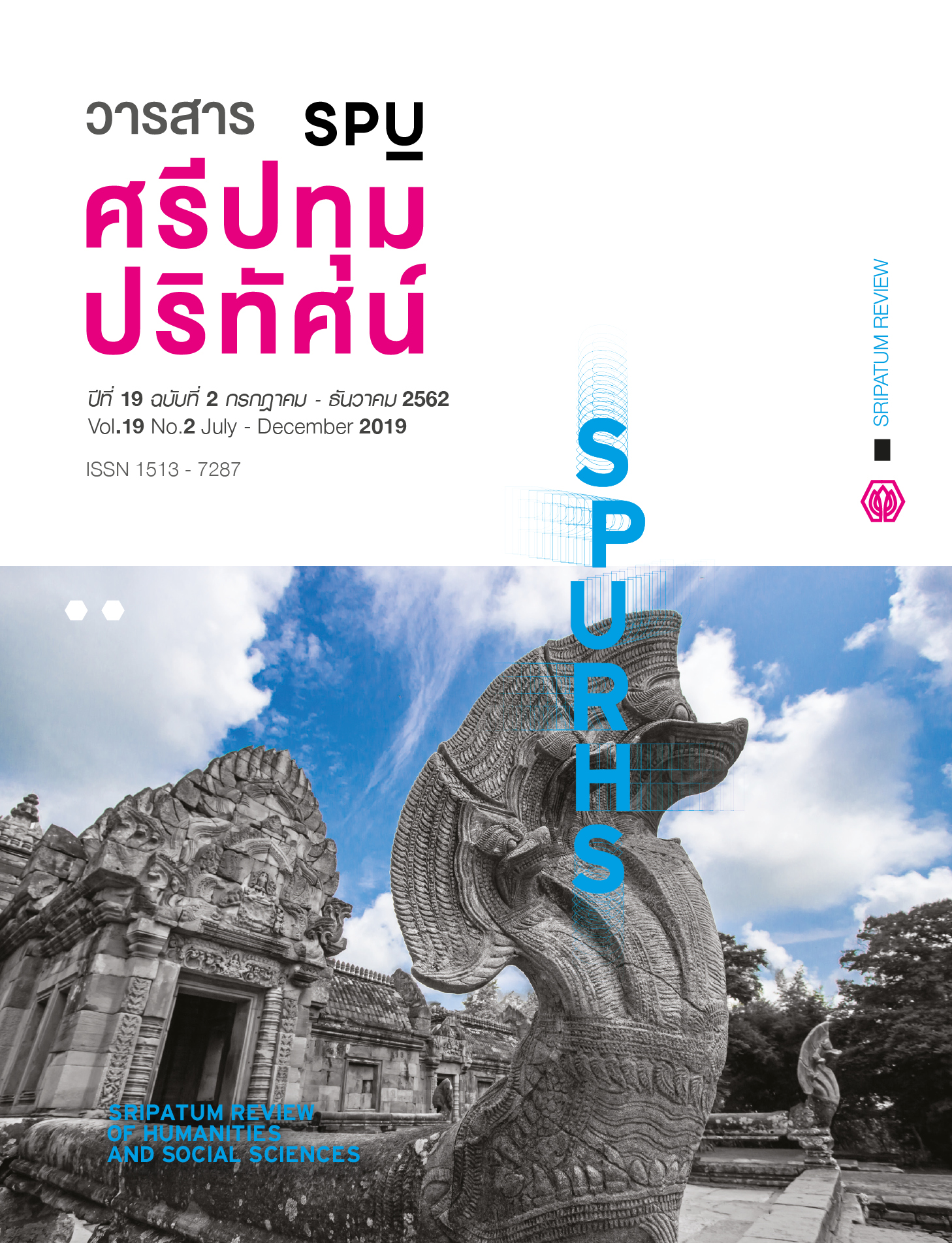การวิจัยและพัฒนานวัตกรรมส่งเสริมทักษะการเรียนคณิตศาสตร์ของนักเรียนชั้นอนุบาล 3 ในโรงเรียนอนุบาล เขตเมืองชัยธานี นครหลวงเวียงจันทน์ สาธารณรัฐประชาธิปไตยประชาชนลาว (Research and development on innovations for promoting skills in learning mathematics of kindergarten students at level 3, in Saitany District, Vientiane Capital, Lao People's Democratic Republic)
Main Article Content
Abstract
The purposes of this research were to develop innovations for promoting skills in learning mathematics of kindergarten students at level 3, in Saitany District, Vientiane Capital. This study was a research and development which employed a combination between qualitative and quantitative methods. The target groups for the qualitative research method were 140 research participants consisting of representatives from the Ministry of Education and Sports, the Head of Kindergarten Department, the Head of Education Office of Saitany District, parents, and administrators of kindergartens. For the quantitative method, the samples were 144 teachers. The data were collected by using a set of questionnaires, in-depth interviews, a focus group discussion, and a participatory brainstorming session. Quantitative data were analyzed using descriptive statistics of percentage, mean and standard deviation; while qualitative data were analyzed with content analysis. Findings were as follows: (1) The innovations for promoting skills in learning mathematics were an innovation for promoting skills in classification and comparison, an innovation for promoting skills in counting numbers, and an innovation for promoting skills in measurement. (2) As for the implementation of the innovations for promoting skills in learning mathematics at Petmangkone Kindergarten School in Saitany District, Vientiane Capital for a period of one semester, the evaluation of innovation implementation was conducted by interviewing students, students’ parents and teachers. This evaluation employed the output evaluation method and outcome evaluation method. The results were that students increased their skills, and their learning occurred through activities. In addition, the parents and teachers were satisfied with the actual practices, and the students paid attention and enjoyed learning.
Article Details
1. กองบรรณาธิการสงวนสิทธิ์ในการพิจารณาและตัดสินการตีพิมพ์บทความในวารสาร
2. บทความทุกเรื่องจะได้รับการตรวจสอบทางวิชาการโดยผู้ทรงคุณวุฒิ แต่ข้อความและเนื้อหาในบทความที่ตีพิมพ์เป็นความรับผิดชอบของผู้เขียนแต่เพียงผู้เดียว มิใช่ความคิดเห็นและความรับผิดชอบของมหาวิทยาลัยศรีปทุม
3. การคัดลอกอ้างอิงต้องดำเนินการตามการปฏิบัติในหมู่นักวิชาการโดยทั่วไป และสอดคล้องกับกฎหมายที่เกี่ยวข้อง
References
Brewer, K. (1995). Arm ‐ waving mathematics: Sound, if Not Rigorous. Teaching statistics an International Journal for teachers, 17 (3), 94 -96.
Dechakhupt, Y. (1999). Educational management for early childhood. Bangkok: Mac. (in Thai)
Duanchai, C. (1998). Basic mathematical skills of early childhood receiving art drawing activities outside the classroom. Thesis of the Degree of Bachelor (Early Childhood Education). Bangkok: Graduate school Srinakharinwirot University. (in Thai)
John, W. B. (1970). Research in Education. Boston MA. : Allyn and Bacon.
Khemmanee, T. (2005). Teaching Science. 4th edition. Bangkok: DanSuttha printing
Kingsone, W. (2012). Small school administration problems under the office of primary education area study in Chonburi Province. thesis of the Degree of Master Program in Educational Administration. Burapa University. (in Thai)
Krejcie, R.V. and Morgan, D.W. (1970). Determining Sample Size for Research Activities. Educational and Psychological Measurement, 30(3), 607-610.
Mayesky, M. (1998). Creative activities for young children. N.P.: Delmar.
Ministry of Education. (1997). Report of department of academic affairs. Bangkok: Ministry of Education. (in Thai)
Ministry of Education and Sports. (2012). Report of department of academic affairs. Vientiane: Ministry of Education and Sports. (in Lao)
Ministry of Education and Sports. (2015). Report of department of academic affairs. Vientiane: Ministry of Education and Sports. (in Lao)
Onbuengphrao, K. (2007). Basic development of mathematics skills for early childhood by using creative art activities for learning. Thesis of the Degree of Bachelor (Early childhood Education). Bangkok : Graduate School Srinakharinwirot University. (in Thai)
Phophot, S. (2008). Using math story telling to improve basic mathematics skills of early childhood. Retrieved on 23 March 2011, from http: // www. Krubannok.com. (in Thai)
Praphruitkit, N. (1998). Mathematics for early childhood. Bangkok: Odean Store. (in Thai)
Saitany District of Education. (2015). Report of department of academic affairs.Vientiane : Saitany District of Education. (in Lao)
Shelly, M. W. (1975). Responding to social change. Pennsylvania: Dowden Huntchisam.
Sinthapanan, S. (2002). Learning process management: Learner-centre focus according to the basic education curriculum. Bangkok: Arksoncharentain. (in Thai)
Tantipalachiwa, K. (2008). Learning activities for early childhood. Bangkok: Edison Press Products. (in Thai)
Thamrongthanwong, S. (2015). Guidelines for drafting a new constitution for sustainable Thailand reform. Chulanith, 12 (6), 1-37. (in Thai)
Tritcharoon, P. (2007). Research and development innovation. Bangkok: n.d.


